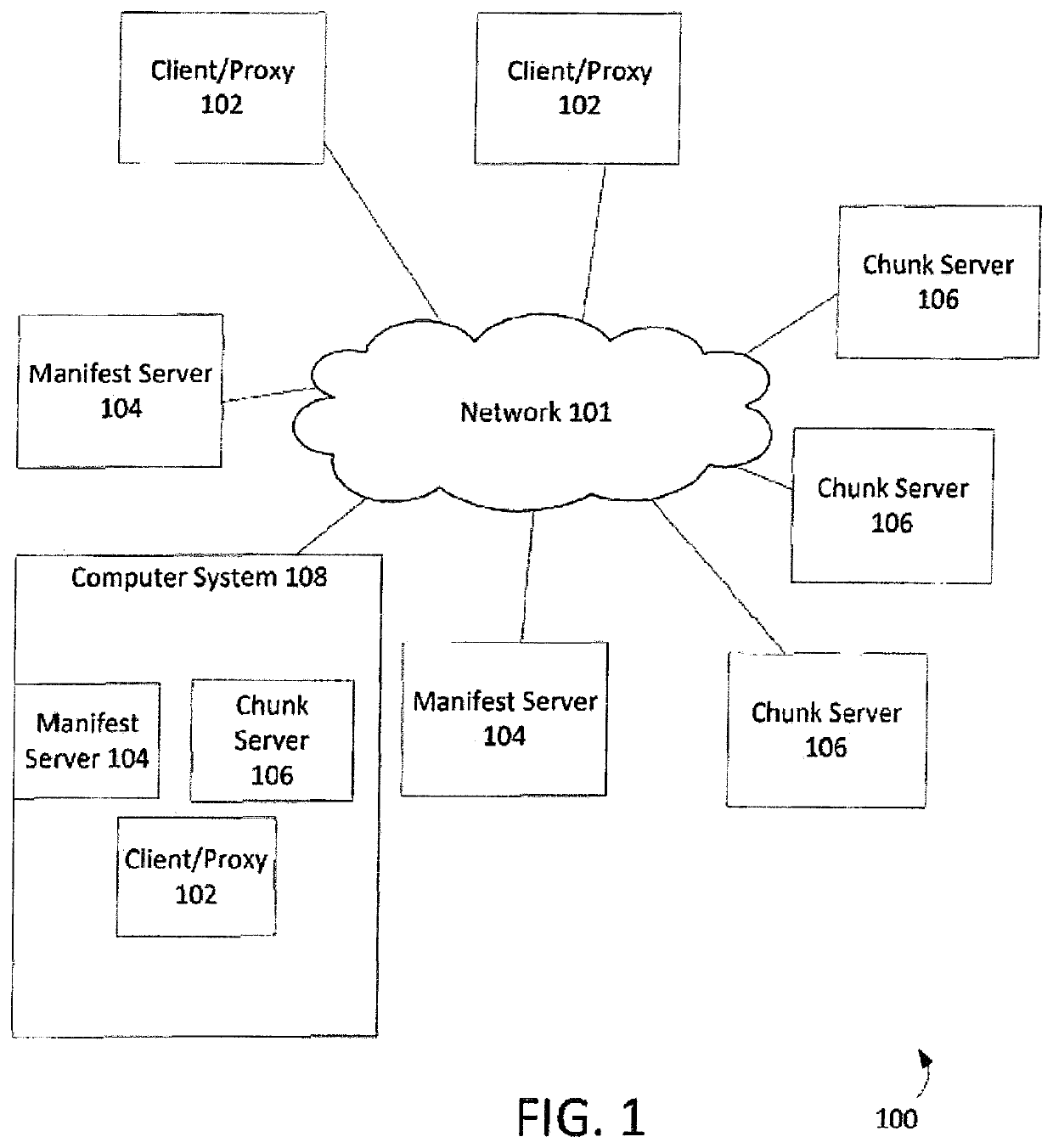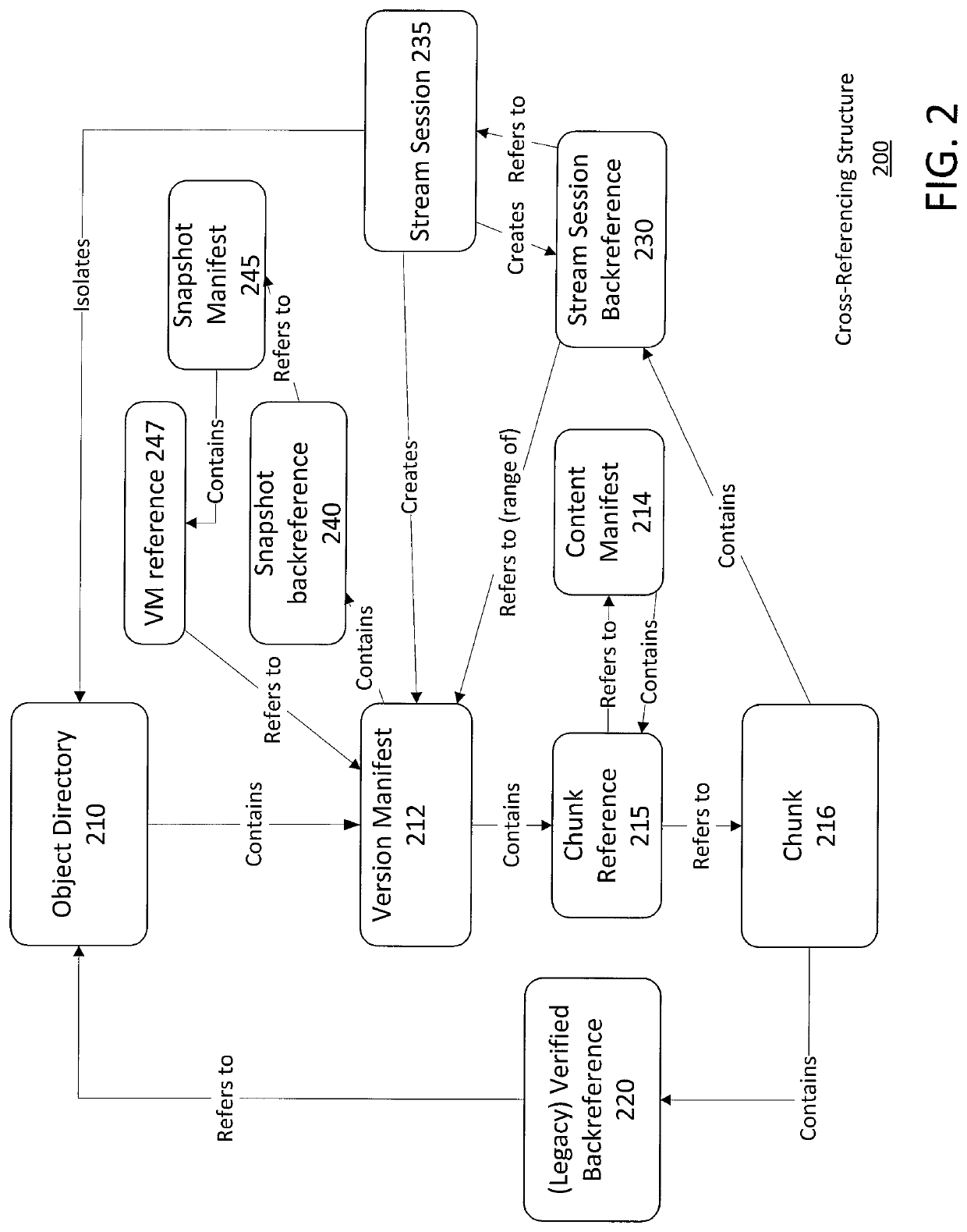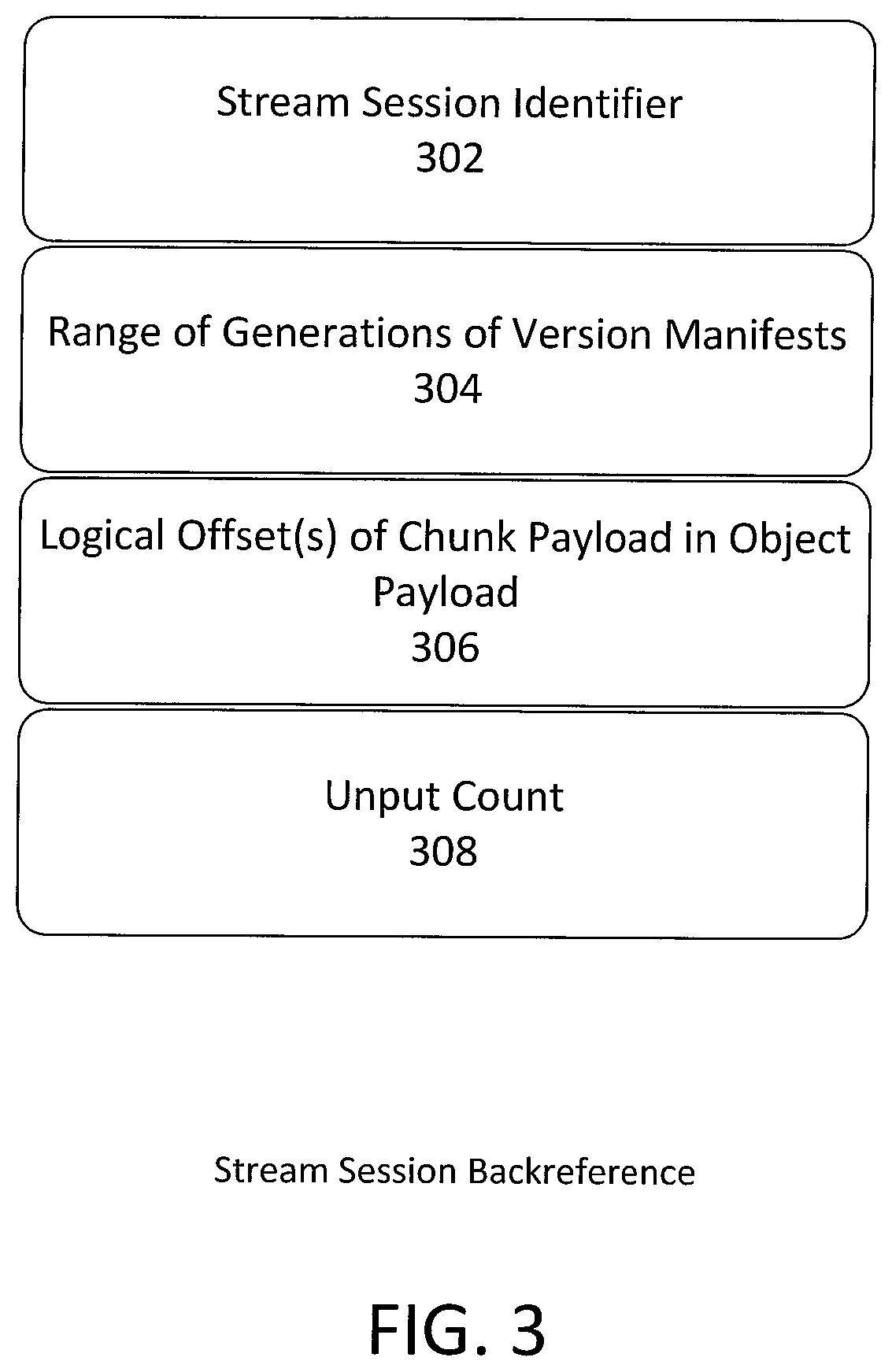Chunk retention in a distributed object storage system using stream sessions and stream session backreferences
a distributed object storage and backreference technology, applied in the field of data storage systems, can solve the problems of reducing the editing work required to maintain backreferences within a streaming session, no centralized system for tracking the assignment of chunks to objects, and severe constraints on the scalability of the object storage system, so as to reduce the editing work and be less precis
- Summary
- Abstract
- Description
- Claims
- Application Information
AI Technical Summary
Benefits of technology
Problems solved by technology
Method used
Image
Examples
embodiment 1
[0163]A distributed object storage system comprising:
[0164]a manifest tracking subsystem which encodes forward-references from version manifests to chunks; and
[0165]a chunk payload subsystem which stores the chunks and encodes stream session backreferences into metadata associated with the chunks,
[0166]wherein the stream session backreferences each identifies a stream session having a finite retention epoch, and
[0167]wherein each stream session identifies a set of one or more objects being edited and a source providing edits during the retention epoch.
embodiment 2
[0168]The system of Embodiment 1, wherein each forward-reference references a chunk by an identity of the chunk without identifying any server on which the chunk is stored, and wherein each stream session identifies the set of one or more objects without identifying any server on which the objects are stored.
embodiment 3
[0169]The system of Embodiment 1 further comprising:
[0170]the source that requests a put of a version manifest for an object to the system during the retention epoch, wherein chunk references that are contained, directly or indirectly, in the version manifest are read.
PUM
 Login to View More
Login to View More Abstract
Description
Claims
Application Information
 Login to View More
Login to View More - R&D
- Intellectual Property
- Life Sciences
- Materials
- Tech Scout
- Unparalleled Data Quality
- Higher Quality Content
- 60% Fewer Hallucinations
Browse by: Latest US Patents, China's latest patents, Technical Efficacy Thesaurus, Application Domain, Technology Topic, Popular Technical Reports.
© 2025 PatSnap. All rights reserved.Legal|Privacy policy|Modern Slavery Act Transparency Statement|Sitemap|About US| Contact US: help@patsnap.com



